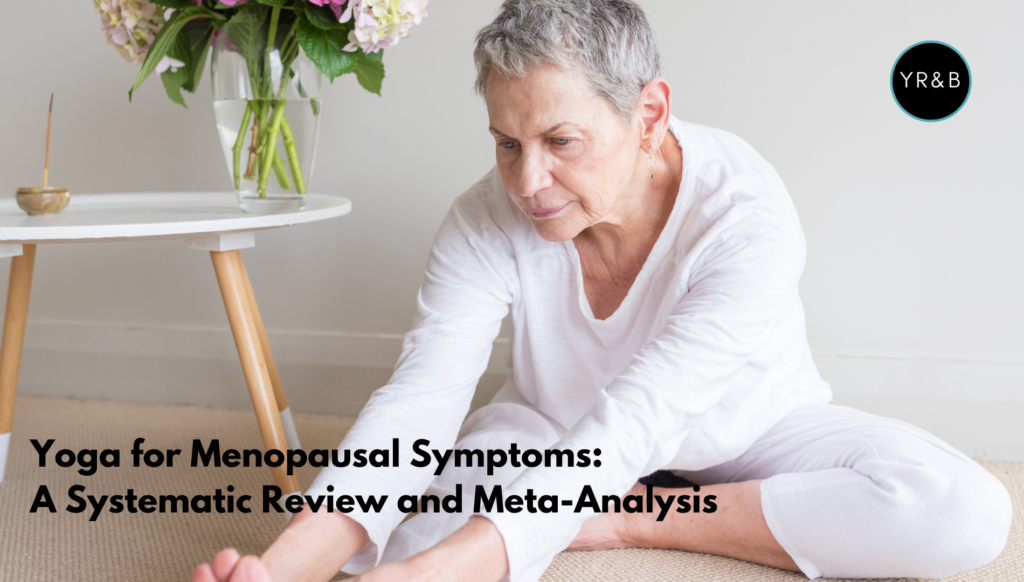What’s This Research About?
Purpose: To evaluate whether yoga, tai chi, or qigong improve vasomotor symptoms (like hot flashes), psychological symptoms, and health-related quality of life in menopausal women.
This umbrella systematic review and updated meta-analysis examined whether yoga, tai chi, or qigong might help alleviate menopause-related symptoms in peri- and post-menopausal women. The review found that yoga was associated with small improvements in vasomotor symptoms (such as hot flashes) and moderate improvements in psychological symptoms like anxiety and depression. However, the strength of evidence for these effects was low to moderate, and results across studies were not always consistent. Effects on overall quality of life were unclear due to limited and variable reporting. No eligible studies were found for tai chi or qigong. While more rigorous research is needed, yoga appears to be a safe, low-risk practice that may offer some benefit as a complementary approach for symptom management during menopause.

TITLE: Improving vasomotor symptoms; psychological symptoms; and health-related quality of life in peri- or post-menopausal women through yoga: An umbrella systematic review and meta-analysis
PUBLICATION: Complementary Therapies in Medicine
DATE: January 2020 Public Access Author Manuscript
AUTHORS: M. Shepherd-Banigan, K.M. Goldstein, R.R. Coeytaux, J.R. McDuffiea, A.P. Goode, A.S. Kosinski, M.G. Van Noord, D. Befus, S. Adam, V. Masilamani, A. Nagi, J.W. Williams Jr.
Standardized Mean Difference (SMD): is a statistical measure used in meta-analyses to compare the effect sizes of different studies, especially when the outcomes are measured using different scales. It tells us how big the effect is, expressed in standard deviation units, so you can compare apples to oranges (e.g., if one study used a 10-point scale for hot flashes and another used a 100-point scale).
Umbrella Systematic Review: An umbrella systematic review is a review of existing systematic reviews and meta-analyses. It is designed to summarize and synthesize evidence across multiple reviews. Instead of looking at individual studies (like a standard systematic review), it looks at and evaluates the findings from many high-level reviews to give a big-picture overview of a topic.

